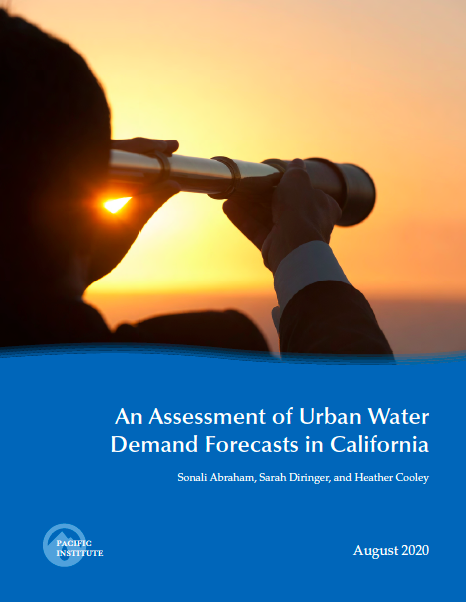An Assessment of Urban Water Demand Forecasts in California

An Assessment of Urban Water Demand Forecasts in California
Overview
In California, urban per capita water demand has declined dramatically over the past several decades, driven in part by greater uptake of water-efficient devices. These reductions have important implications for estimating future water demand. However, failure to account for the long-term trend of declining per capita water demand has led to routine overestimation of future water demand. This can lead to unnecessary and costly investment in unneeded infrastructure and new sources of supply, higher costs, and adverse environmental impacts.
This report examines the accuracy of long-range water demand forecasts for California’s 10 largest urban water suppliers. It finds that per capita water demand declined for all water suppliers between 2000 and 2015. In most cases, reductions in per capita water demand were so large that total water demand declined during this period. Additionally, all water suppliers overestimated demand, driven largely by inflated estimates of per capita water demand and, to a lesser extent, overestimates of population growth rates. The report offers recommendations on how to improve the accuracy of long-range water demand forecasts.
Key Findings
Key findings include:
- Urban water suppliers routinely overestimated future water demand, as evidenced by the analysis of California’s 10 largest urban water suppliers. These overestimates were such that water suppliers projected that future water demand would increase, while actual demand declined.
- Overestimates of water demand were largely due to inflated estimates of future per capita demand. Per capita water demand has declined at a faster rate than water suppliers expected: water suppliers projected that per capita demand would decline by about one percent per year; however, actual per capita demand has declined twice as fast.

